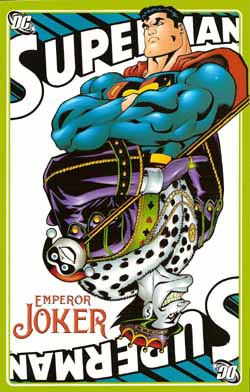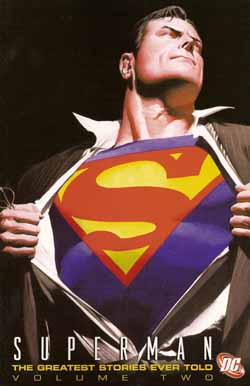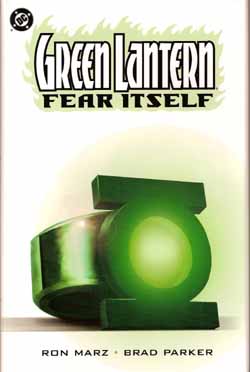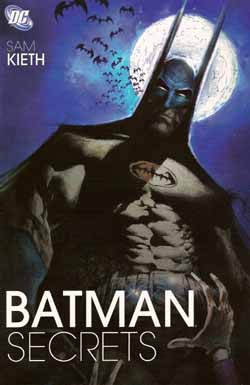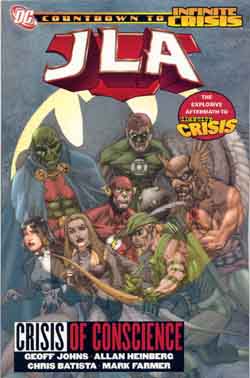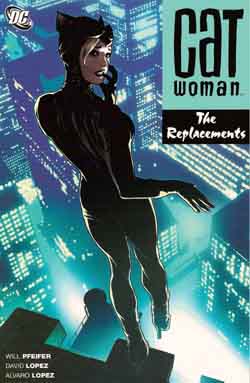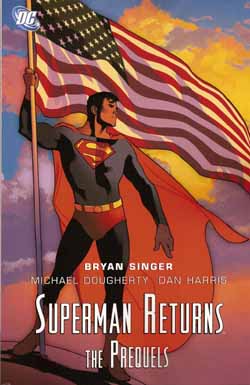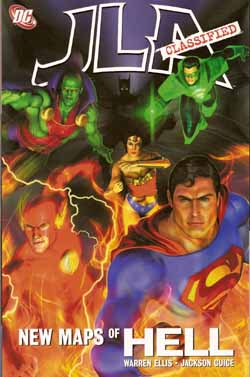By various
(DC Comics)Â ISBN 1-84576-433-1
The night is broken with hideous screams. Every night. A black-clad superhuman smashes out of Arkham only to be subdued by the warped Superman clone called Bizarro before daybreak. Every night. A diminutive pixie of a man dashes to an appointment only to be hit by a train, or a giant weight or… In a sky that rains custard pies hangs a moon that has the Joker’s face. What is going on and when will it all end?
Although not a new plot, and despite being the product of more than two dozen creators, this tale of a time when the Joker steals the power of the Fifth dimensional Mr. Mxyzptlk and literally remakes creation in his own image just so he can torture the heroes who have so often thwarted him, actually works. Keeping up a breakneck pace and peppering the action with in-jokes and sly asides, the narrative of Superman under terminal pressure to save the universe is gripping and the eventual denouement actually works in context. This is a marvellous piece of comic eye-candy.
Although taken from a particularly grim and humourless period in recent Superman history, this thinly disguised tribute to the zany genius of Chuck Jones, Tex Avery and those wacky Warner Brothers cartoons reads like a breath of fresh air when gathered together in one collection.
Originally published in Superman #160-161, Adventures of Superman #582-583, Superman: The Man of Steel #104-105, Action Comics #769-770 and Emperor Joker #1. Written by Jeph Loeb, J.M. DeMatteis, Mark Schultz and Joe Kelly, with art by Ed McGuinness, Can Smith, Mike Miller, José Marzan Jr., Doug Mahnke, Tom Nguyen, John McCrea, Kano, Marlo Alquiza, Duncan Rouleau, Todd Nauck, Carlo Barberi, Scott McDaniel, Jaime Mendoza, Richard Bonk, and Armando Durruthy
© 2000, 2007 DC Comics. All Rights Reserved.

